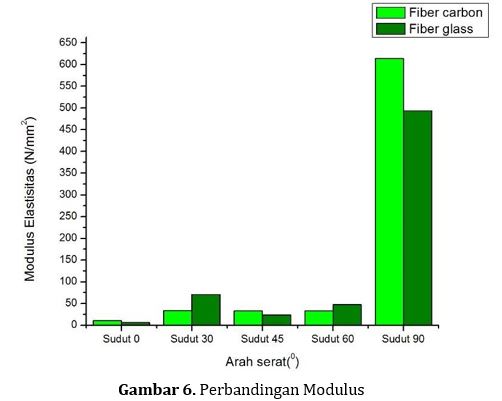Kekuatan Tarik Material Fiber Carbon Dan Fiber Glass Berdasarkan Orientasi Serat Berbasis Matriks epoxy
Abstract
The use of metal materials on the variation of components was reduced because of its heavy in wieght, complex manufacture process and corrosive. Therefore composite materials with different variations was needed to be developed. The material was used in this research were Fiber glass, Fiber carbon, and Epoxy with the varying orientation angle of 0°,30°, 45°, 60°, and 90°. The composites was made by vole fraction of 30%: 70% (Matrix: reinforced). ASTM D-3039 was used to determined the tensile strength. Results shows that the angle orientation of the fiber influence in tensile strength, which the greater of fiber angle orientation made the tensile strength greater too,500 N/mm2and 620 N/mm2. The comparison of fibreglass composite with the fiber carbon composite in angle orientation of 0°, 45°, and 90° showed that the fiber carbon is greater than the fiber glass, while in the orientation of 30°and 60° fiber glass Superior. The combination of the best tensile strength based on fiber orientation was obtained by the fiber carbon with the angle of 90° and in fiber glass in 60° fiber orientation.
References
Callister, W. D. 2007. Material Science And Engineering.7thed.NewYork:John Wiley & Sons,Inc.
Edwards. K. L. 1998. An overview of the technology of fibre-reinforced plastics for design purposes. Material and Design. Vol. 19. Issue 1-2.
Gibson, R. F. 2012. Principles Of Composite Mirwanirsyad,n.A.(2015). Sifatfisis dan mekanis pada komposit polyester serat batang pisangyangdisusunasimetri[45o/ -30o/ 45o/ -30o].
Santhosh Kumar. M, D. S. (2014). Study on Effect of Thick ness and Fibre Orientation on a Tensile and Flexural Properties of a Hybrid Composite. 56-66.
Munasir. 2011. Studi Pengaruh Orientasi Serat Fiber Glass Searah dan Dua Arah Single.
Sugiyono. 2012. Metode Penelitian Kuantitatif, Kualitatif, dan R&D. Bandung: Alfabeta.
Robiansyah. Kurniawan., Irfa’i. Mochammad Arif. 2021. Pengaruh Orientasi Arah Serat Terhadap Kekuatan Tarik Dan Kekuatan Bending Komposit Berpenguat Serat Karbon Dengan Matrik Epoxy. JTM. Vol 09. No. 03. Hal 47-52.
Rusman nur ichsan, m. A. 2015. Pengaruh susunan lamina k omposit berpenguat serat e-glass dan serat carbon terhadapk ek uatan tarik dengan matrik polyester, 2739.
Wilmesa, A., & Hornbergera,K. 2015. Influence of Fiber Orientation and ASM International. 2000. ASM Handbok.


